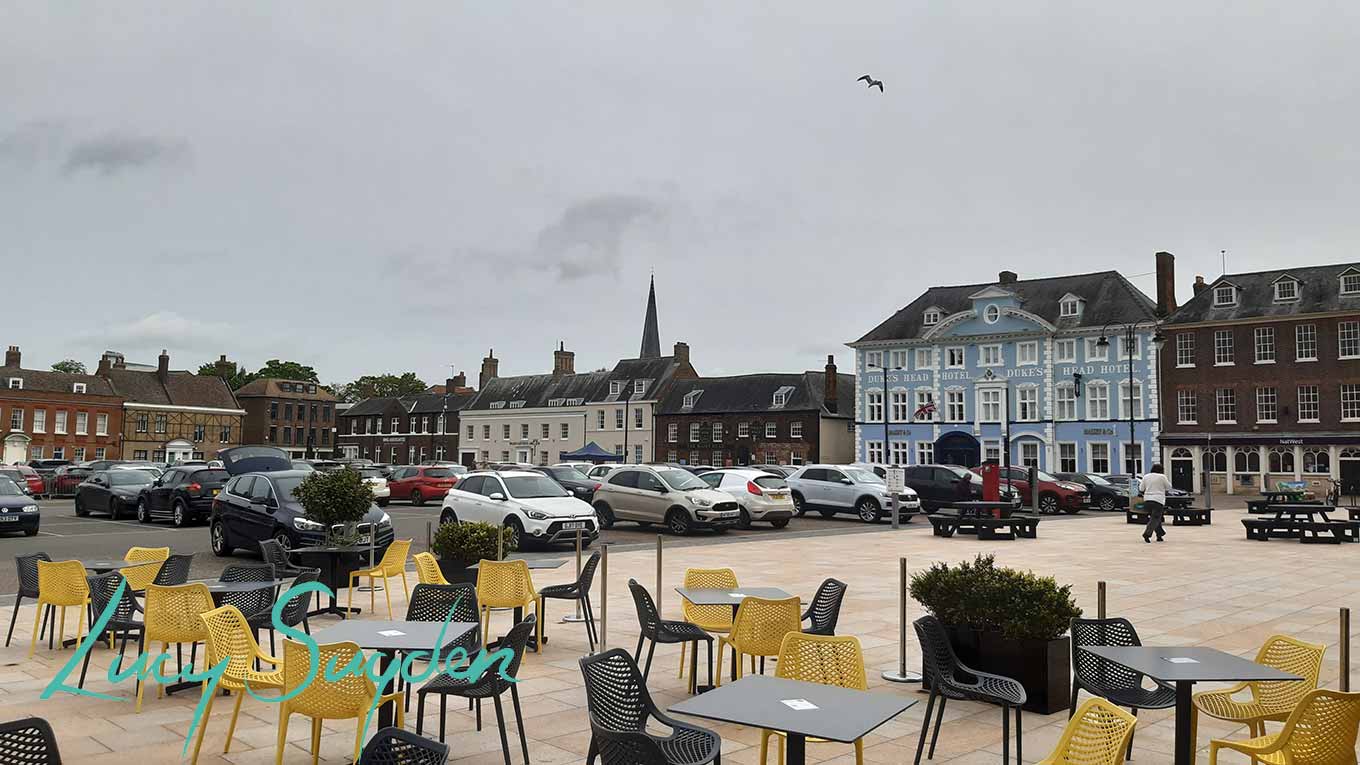
Tuesday Market Place at King's Lynn by Lucy Sugden Weaving Artist
King's Lynn
King’s Lynn was first called Bishop’s Lynn when it was founded in 1095 by Bishop Herbert de Losinga, after he had transferred the see from Thetford to Norwich the year before.
The original settlement would probably have been based around a salt-water lagoon or series of inlets, and centered around the present All Saints Church. The town developed to the north of this original settlement - between All Saints Church and Saturday Market Place where St Margaret’s Church and Priory were established around 1100.
After rapid expansion from the 12th Century onwards Bishop William Turbe laid out a new settlement north of the Purfleet around 1145 with its market at Tuesday Market Place. In 1204 Both settlements were united under a royal charter and the new town was named Bishop’s Lynn.
The Great Ouse emptied via the Wellstream at Wisbech until the 13th Century, until flooding occured and the river was redirected to join the Wash at Bishop’s Lynn, which became one of England’s busiest ports. Exporting wool and cloth, and importing wine, timber and luxury goods.
Created: 9 June 2021 Edited: 29 November 2023
King's Lynn
Local History around King's Lynn
There are some historic monuments around including:
Portion of town walls in Kettlewell LaneMedieval town wallsThe Former South Gate and Southgates BridgeGreyfriars TowerCross in St Margaret's churchyardTown wall beside Wyatt StreetMedieval settlement remains north of Kenwick Farm houseRed Mount Chapel, The WalkPost-medieval defencesMoated site of Wormegay Priory, fishponds and associated enclosuresLittleport Street BridgeWhitefriars Gateway, South Lynn.









